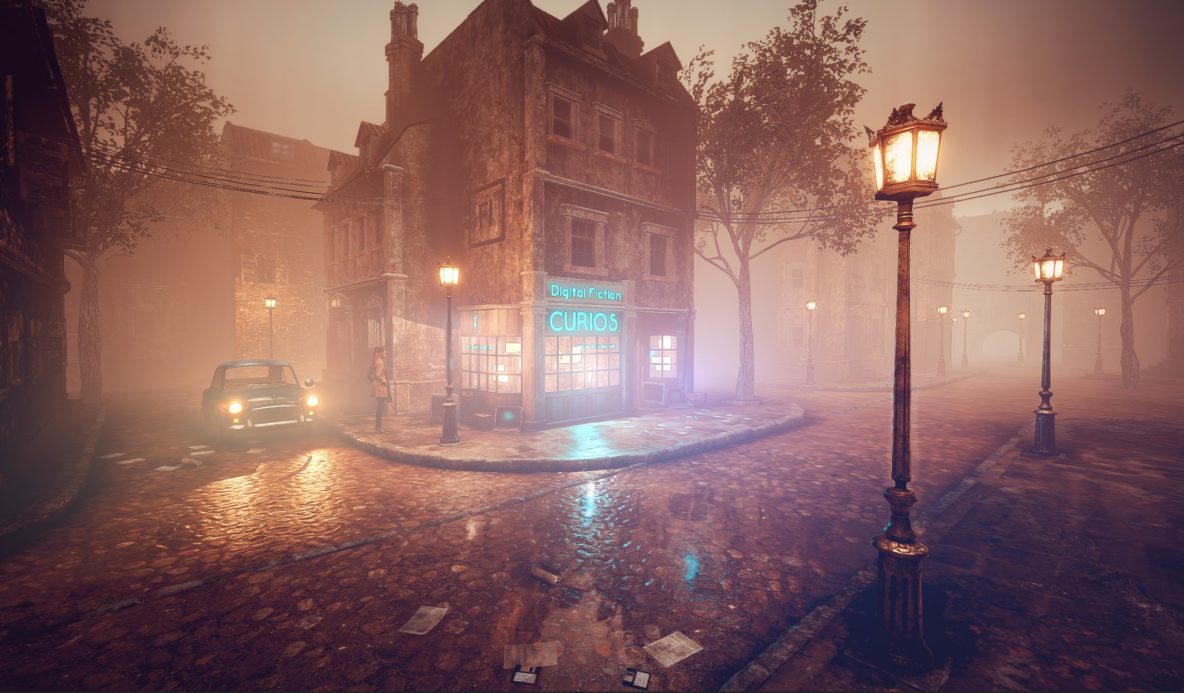Shapeshifting
Posted November 20, 2019 by Andy Campbell
What exactly is new media writing? Even ten years into the Prize, it’s still a medium – a concept – that many people seem to struggle to define. Yet, as James O’Sullivan puts it in the Los Angeles Review of Books, new media writing is ‘…an act of expression capable of permeating the public consciousness… [it’s] everywhere, it is thriving, and it is literary.’
Perhaps the ‘problem’ is that new media writing isn’t one specific practice or singular craft that you can pin down – it’s a whole range of forms and practices that happen across many different platforms, disciplines and cultures. The wait for a single piece of ‘new media writing’ that will somehow define the ‘genre’ is pointless: NMW is genre-defying.
I’ve been one of the judges on the New Media Writing Prize since it began. I tend to find it easier to identify the submissions that aren’t new media writing, the ones that to my mind are simply not doing anything that you couldn’t do in print or in any other ‘singular’ (and often far easier to define!) medium such as a work of traditional poetry, a film, an audio recording, photograph, etc. Other than that, the parameters are wide open: submissions can range in diversity from a 360-degree visual narrative to an interactive novel written using Survey Monkey. It’s not just the work that’s diverse either: ‘authors’ range from individuals to large teams and can be from any background, located anywhere in the world.
I’m the digital director of a UK arts organisation called One to One Development Trust. We’ve been in business now for 30 years and have certainly seen a lot of technological change. We’re a busy and diverse creative organisation that works with people and technology to tell stories – both real and fictional – and to create digital art, often on a very grass-roots level.
Our most experimental work is developed through our in-house digital fiction studio Dreaming Methods which has been producing new media writing since the 1990s. Some of our earliest work on the web, which now dates back over 20 years, was created through a browser-based technology called Flash. In 2010 when the Prize started out Flash was the platform that 70% of the submitted entries were created in – including the very first winner, Underbelly, by Christine Wilks.
Dreaming Methods’ early output was a boiling pot of concepts of ideas that attracted the attention of academics, gamers, readers, writers and publishers, all of whom would argue about ‘what it was’ exactly that we were creating. Was this the end of books? The birth of a new form of literature? Or was it just a flash-in-the-pan (literally, given the tech we were using) that was interesting but ultimately doomed to failure?
New media writing has never been easy to pin down: it’s always changing and evolving. As technology has converged, we’ve found our work shifting into the realms of playable narratives and immersive experiences, from story-based video games to Virtual Reality poems. The important thing for us is that language – text – still permeates everything, flows in and around and through every component of our often rich and complex digital stories.
Digital writing though, by its nature, exists on shifting sands; quite a few of the original submissions sent into the Prize many years ago have vanished out of existence, found now only via the Internet Archive’s Wayback Machine. Flash which I mentioned earlier, one of the most popular platforms for early media-rich digital art and writing, will be written off next year – removed from all major web browsers – making a huge array of material much more difficult (if not impossible) to access.
One of Dreaming Methods’ latest projects is called Digital Fiction Curios. It emerged out of some of our wider work around heritage. We’ve created several ‘virtual museums’ recently to house collections of historical and culturally important material for organisations that don’t have the physical space to exhibit it.
With Flash on the brink of doom, and therefore our own body of early work under threat, the question that became apparent to us was: could we make a virtual museum that houses artistic Flash works as a method of archiving them?’
With funding and research support from our long-term collaborator Professor Alice Bell (Sheffield Hallam University), Digital Fiction Curios answers that question with a resounding ‘yes’.
Designed in the style of an atmospheric virtual ‘curiosity shop’, the project houses three of our early Dreaming Methods Flash-based narratives as a proof of concept: Inside (2000), The Flat (2006) and Clearance (2007). Through Curios, these works are preserved, and possible to explore in full without a browser, Flash or even the internet, in Virtual Reality.
Curios also offers a glimpse of what these works would be like if we’d made them today, for the latest immersive technologies: on a small table in the curiosity shop the reader/player can find a VR headset. The headset can be picked up and worn to enter an Inception-like VR-within-VR, unearthing new, fun, cutting-edge interpretations of all three projects.
As part of the New Media Writing Prize 10th Anniversary event/the 2019 Prize Awards Ceremony, we’ll be offering people the chance to explore Digital Fiction Curios in VR, alongside some of our other recent digital narrative projects. We’ll also be on-hand to answer any questions about digital fiction development and production.
In the meantime, why not take a look at the growing archive of NMWP shortlisted works and winners? The Prize has already managed to capture a large body of work that will become increasingly significant to look back on as time and technology progresses.

